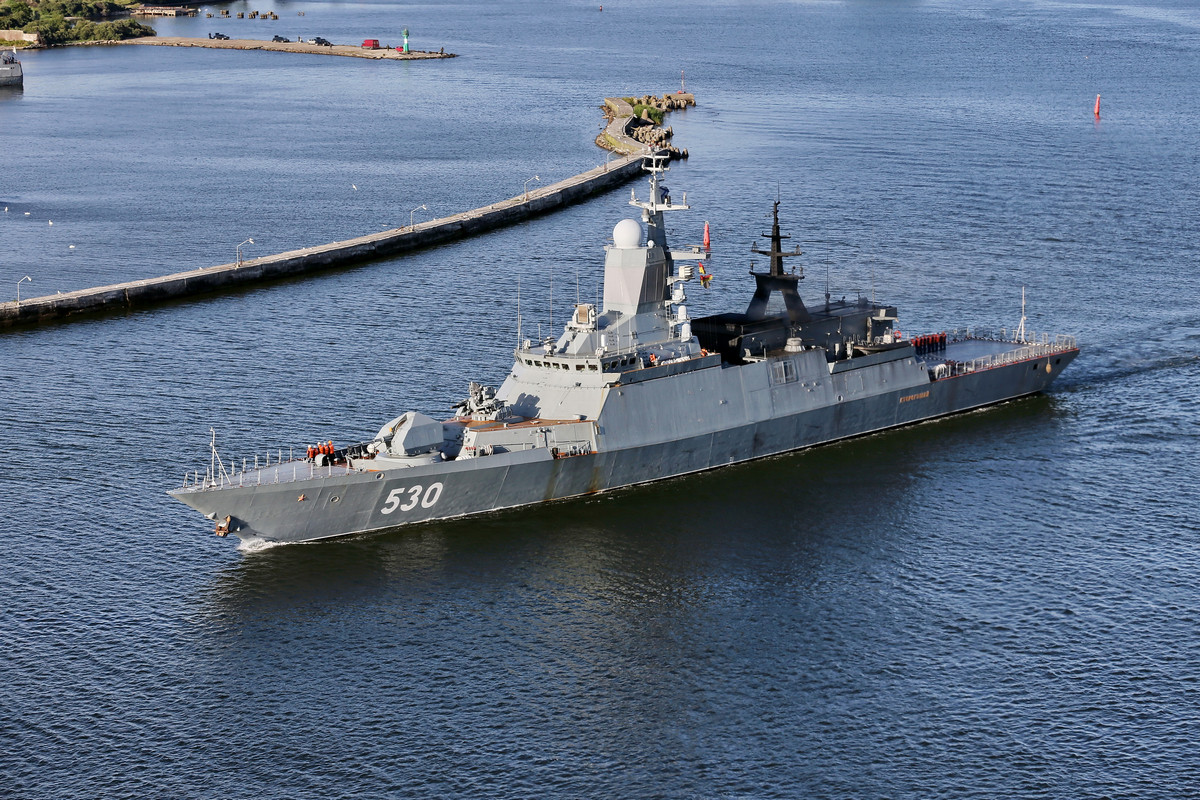|
RPK-9 Medvedka
RPK-9 Medvedka ("Mole cricket", NATO Designation SS-N-29) is a modern missile system used to engage submarines. The system consists of a launcher with eight missiles, each with the small torpedo as the warhead. Currently this system is installed on Steregushchiy-class corvettes and will be utilised by the Admiral Gorshkov-class frigate The ''Admiral Gorshkov'' class, Russian designation Project 22350 for the original and upgraded version armed with 16 and 32 VLS cells respectively, is the newest class of frigates being built by the Severnaya Verf in Saint Petersburg for the ... in the future. Specifications *Operational depth: *Total weight of system (with 8 missiles): *Total weight of system (with 4 missiles): *Missile weight: *Diameter: Operators ; * Russian Navy References External links Warfare.ru article {{DEFAULTSORT:Ss-N-29 RPK-009 Anti-submarine missiles of Russia RPK-009 Moscow Institute of Thermal Technology products ... [...More Info...] [...Related Items...] OR: [Wikipedia] [Google] [Baidu] |
Anti-submarine Missile
An anti-submarine missile is a standoff anti-submarine weapon. Often a variant of anti-ship missile designs, an anti-submarine systems typically use a jet or rocket engine, to deliver an explosive warhead aimed directly at a submarine, a depth charge, or a homing torpedo that is carried from a launch ship, or other platform, to the vicinity of a target. History Depth charges were the earliest weapons designed for use by ships against submerged submarines. These explosives were initially dropped as the ship moved over the presumed location of a submarine. Before World War II, shipboard sonar was unable to maintain contact with a submarine at close range. Various mortar-type projectors, including Hedgehog and Squid, were devised during World War II to allow a ship to maintain sonar contact while lobbing explosive charges toward the submarine. During the Cold War, missiles were developed to provide greater range with reduced recoil. Some missiles and rockets, such as Hong San ... [...More Info...] [...Related Items...] OR: [Wikipedia] [Google] [Baidu] |
Moscow Institute Of Thermal Technology
Moscow Institute of Thermal Technology (MITT; russian: Акционерное общество «Корпорация Московский институт теплотехники», , JSC Corporation "Moscow Institute of Thermal Technology") is a Russian (formerly Soviet) engineering and scientific research institute founded on May 13, 1946. The institute is located in the Otradnoye District in the north of Moscow. Previously, it was primarily focused on developing ballistic missiles and rockets to increase the nation's strategic deterrent capability. Today it is also involved in civilian projects and has modified some of its intercontinental ballistic missiles into launch vehicles to be used for satellites. The name can also be translated as Moscow Institute of Thermal Equipment. History April 19, 1945 the State Defense Committee of the USSR issued a decree №8206 ordering the People's Commissar for Armament Boris Vannikov to create a weapons design bureau and a pilot pla ... [...More Info...] [...Related Items...] OR: [Wikipedia] [Google] [Baidu] |
Steregushchiy-class Corvette
The ''Steregushchiy'' class (russian: Стерегущий, , Guarding), Russian designation Project 20380, is a class of corvettes being built for the Russian Navy. Designed by the Almaz Central Marine Design Bureau, subsequent vessels were built to an improved design (Project 20381), incorporating the Zaslon-Redut SAM system. The ship full displacement and dimensions are large for a corvette, thus it is designated as a frigate by NATO. The ''Steregushchiy'' class has been further developed into the (Project 20385) and Project 20386 subclasses. The export variant is known as Project 20382 ''Tigr''. History The ships of the ''Steregushchiy'' class are multipurpose corvettes, designed to replace the . Such ships are used for littoral zone operations, engagement of enemy submarines and surface ships, and gun support of landing operations. The first batch built at the Severnaya Verf shipyard in St. Petersburg consists of four ships. A second building line has been started at Kom ... [...More Info...] [...Related Items...] OR: [Wikipedia] [Google] [Baidu] |
Admiral Gorshkov-class Frigate
The ''Admiral Gorshkov'' class, Russian designation Project 22350 for the original and upgraded version armed with 16 and 32 VLS cells respectively, is the newest class of frigates being built by the Severnaya Verf in Saint Petersburg for the Russian Navy with a cost of $250 million. The Project 22350 was designed by the Severnoye Design Bureau and incorporates use of stealth technology. As of August 2020, ten vessels have been ordered for delivery by 2027. The lead ship of the class, , was commissioned on 28 July 2018. History The design of the ship, developed by ''Severnoye PKB'' (Northern Design Bureau) FSUE in St. Petersburg, was approved by Naval Command in July 2003. The plan is to fully replace the older and in four Russian fleets. The lead ship, or its full name – ''Admiral of the Fleet of the Soviet Union Gorshkov'', was laid down on 1 February 2006 in Severnaya Verf shipyard in St. Petersburg. In late October 2008 the Russian deputy prime minister, Sergei Ivan ... [...More Info...] [...Related Items...] OR: [Wikipedia] [Google] [Baidu] |
Anti-submarine Missiles Of Russia
An anti-submarine weapon (ASW) is any one of a number of devices that are intended to act against a submarine and its crew, to destroy (sink) the vessel or reduce its capability as a weapon of war. In its simplest sense, an anti-submarine weapon is usually a projectile, missile or bomb that is optimized to destroy submarines. History Before World War I Prior to about 1890, naval weapons were only used against surface shipping. With the rise of the military submarine after this time, countermeasures were considered for use against them. The first submarine installation of torpedo tubes was in 1885 and the first ship was sunk by a submarine-launched torpedo in 1887. There were only two ways of countering the military submarine initially: ramming them or sinking them with gunfire. However, once they were submerged, they were largely immune until they had to surface again. By the start of the First World War there were nearly 300 submarines in service with another 80 in production ... [...More Info...] [...Related Items...] OR: [Wikipedia] [Google] [Baidu] |
